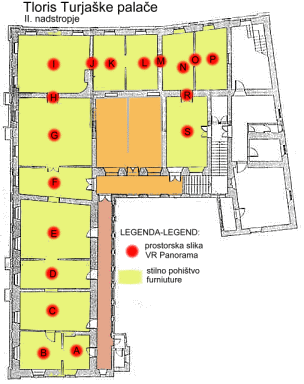
|
|
B. RENAISSANCE ROOM (16th
century). The two exhibited chests are architecturally articulated with
columns, arches and ridges. The panels and frames have inlaid decorations
(intarsia). The cabinet on the chest served (when open in the horizontal
position) as a writing desk and is evidence that writing was already quite
widespread among the nobility and bourgeoisie in this period. This was
also the period in which cupboards and chairs began to be used, gradually
replacing chests and benches. Towards the end of the Renaissance period
chairs were upholstered, while earlier they had been fitted with cushions.
The style of coffering of the painted ceiling with its foliage motifs and
geometric decoration is evidence of Italian influences in Slovenia. Tin
. |
